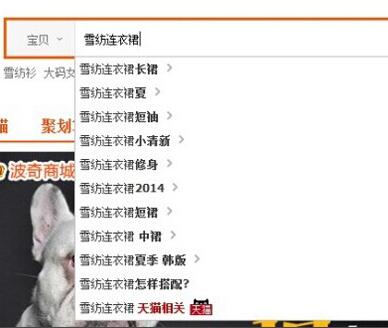Opening a store online is easy, but it is difficult to build a good store and run a store well. Taobao operation requires a lot of work, such as Taobao baby’s main picture optimization, baby title keyword optimization, store decoration and other contents are all necessary learning content for sellers now. Today, the editor will introduce to you how to optimize Taobao baby’s keywords.
The traffic of Taobao search keywords entering the store can be increased by increasing the volume tool.

How do we grasp the keywords and optimize existing keywords?
1. Choose keywords with relatively less competitive nature
If Taobao sellers choose competitive big words as keywords for the baby title, and your baby’s weight and sales volume are not high, it will not benefit the baby. Only by choosing words with small competition will the greater the chance of the baby being displayed, especially the wireless display, and the traffic of some big words may be obtained. Keywords must conform to the baby's attribute selling points. The title contains industry hot search terms that will allow you to continue to gain traffic!
2. The title is full of 30 characters
Since Taobao can write 30 characters of titles for you, try to fill them up, there is no harm. But don’t write irrelevant keywords such as purchasing agents and special offers into the title, because the title is a channel for accurate optimization, and its function is to bring you more accurate traffic. Adding irrelevant words may be counterproductive.
3. Don’t deliberately pay attention to the order of keywords
Although it is said on the Internet that Taobao search engines will crawl in order, there is actually no need to pay so much attention to the order of keywords, just read it casually. From the seller's perspective, what will the search order of entering keywords look like. The first thing is Daci, so just put the keywords in Daci and the title header.
4. Try not to have spaces in the title
You can often see some baby titles with spaces on Taobao. Such titles are in the form of big words + attribute words + adjectives + selling points to better participle words. In fact, removing spaces can make the title keywords closely match, and it is best not to add spaces, because Taobao search engines will automatically participle words most of the time.
5. Check whether there are any violations in the keywords
The title keywords cannot be prohibited or exaggerated. You should choose the corresponding precise keywords based on the actual situation of your baby. Four types of prohibited keywords such as commitment description, disease name, efficacy and other efficacy categories can be viewed in Alibaba Mama Customer Service Center.
6. Search for keywords and find babies
After the baby title optimization is completed, you need to query the keywords for about two hours to find the baby. If the keywords cannot be found, search for the full title. You should also pay attention to the time when the baby is released. It is best to be released in three periods: 12:45, 17:45 and 20:45, because these three periods exceed the peak period of the industry. Baby can get more display opportunities and have a higher search ranking. Recommended reading: What do you need to know about Taobao search keyword optimization?
The above 6 points briefly introduce the key to Taobao baby optimization. When optimizing keywords, we must follow the steps step by step. Only in this way can we do a good job in Taobao operation.



![#Laogao E-commerce Newsletter# [March 13 E-commerce Morning News]](/update/1678670794l886119238.jpg)



 EN
EN CN
CN
